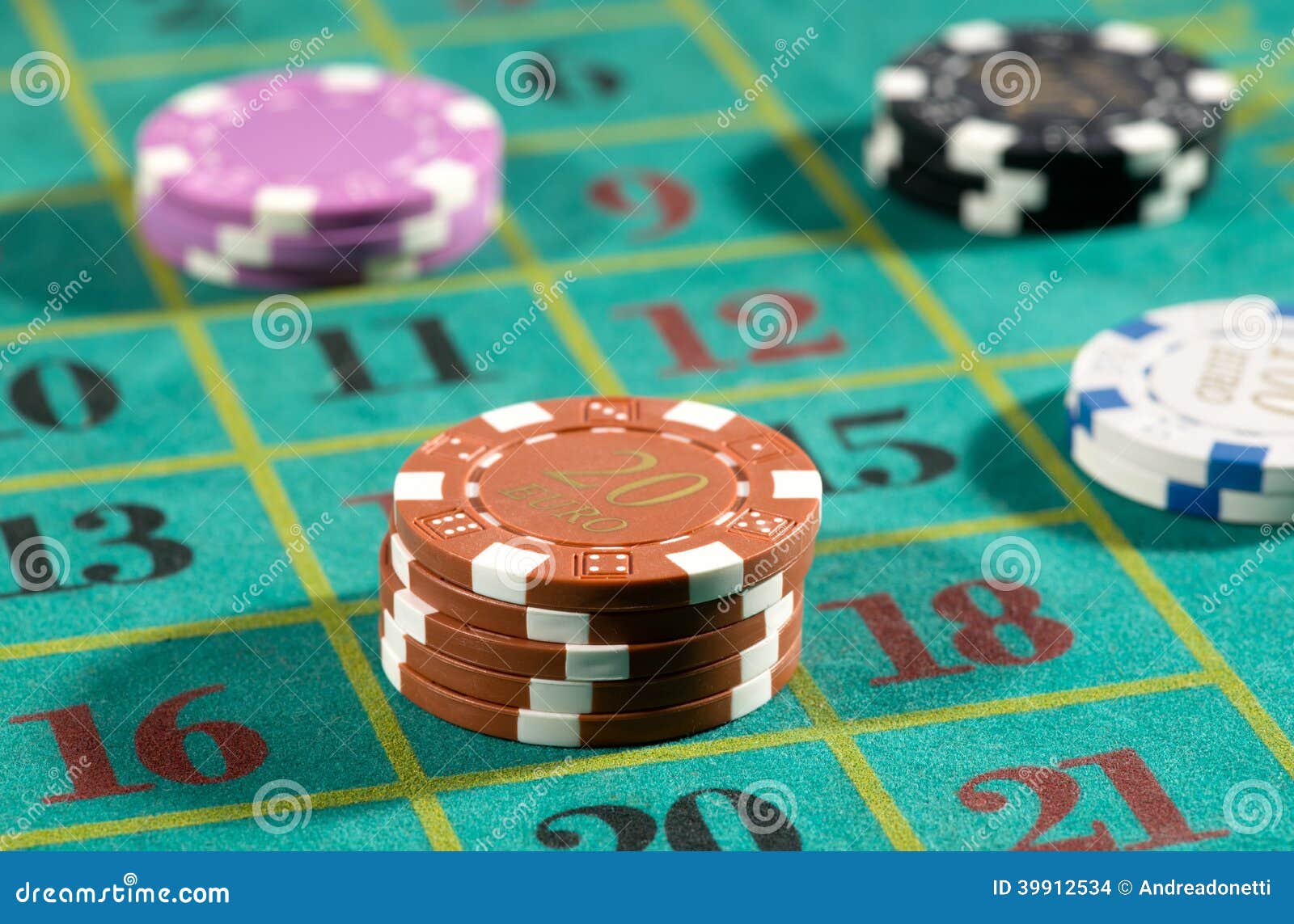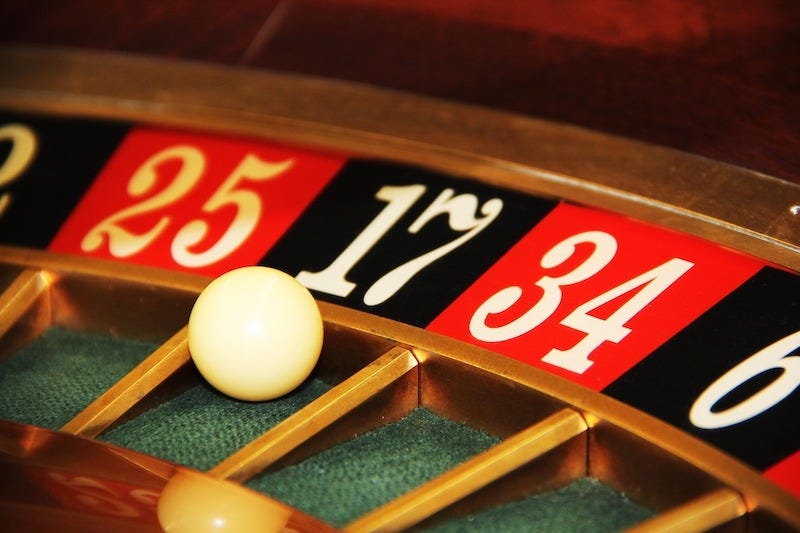Remember to stay realistic about the long odds on this popular game of chance. Approach roulette with the sober realization that, with a house advantage of 5.26 percent on the American wheel, roulette is among the worst bets in a casino. Despite the odds, you can still use some simple strategies to stretch your roulette bankroll and enjoy the thrill of the spin. This article contains a few tips that can help you improve your chances of winning.

Roulette is a drain on your wallet simply because the game doesn’t pay what the bets are worth. With 38 numbers (1 to 36, plus 0 and 00), the true odds of hitting a single number on a straight-up bet are 37 to 1, but the house pays only 35 to 1 if you win! Ditto the payouts on the combination bets. This discrepancy is where the house gets its huge edge in roulette.
There’s another bet that is considered to be an outside bet but is available only in certain roulette variations. It’s called the snake bet and it covers the red numbers 1, 5, 9, 12, 14, 16, 19, 23, 27, 30, 32 and 34, creating the shape of a snake. In this bet, all the numbers are covered by one chip. Therefore, the odds against winning with a Straight Up bet on 32 Red are equal to 36/1. These reversed odds are normally used by gambling establishments to list the payouts of the winning bets. The smaller the likelihood of winning with a given roulette bet, the greater the return offered by the house. The highest roulette odds (36 to 1) are for a single number bet and the lowest (1 to 1) are for outside bets like Odd/Even or Red/Black. Secondly, if you want to know what is the best bet for winning in online roulette, keep in mind that the European roulette odds to win are slightly better than those at the American table. Another common bet is Red/Black. This pays out 1/1 (or evens ), so if you put £1 on red and it wins, you get £1 plus you get your original £1 back = £2 in total. Your chances of winning are 18/37 because there are 18 red numbers out of the total 37. The roulette betting calculators available online also compute high-risk betting units, suitable for the type of player, who prefers to bet big and collect greater profits, respectively. The roulette betting calculator has computed a high-risk betting unit of £8 for the bankroll of £200, used in this example.
Starting with the basics


Strategy is critical if you want to increase your odds of winning. The first time you play roulette, the players sprinkling the layout with chips may look as if they’re heaping pepperoni slices on a pizza. You can make many different bets as long as you stay within the table’s maximum limits. Consequently, few players make just one bet at a time.
Of course, the more bets you make, the more complicated and challenging it is to follow all the action. Here are two possible plans of attack to simplify matters:
- Stick to the table minimum and play only the outside bets. For example, bet on either red or black for each spin. This type of outside bet pays 1 to 1 and covers 18 of the 38 possible combinations.
- Place two bets of equal amounts on two outside bets: one bet on an even-money play and the other on a column or dozen that pays 2 to 1. For example, place one bet on black and one bet on Column Three, which has eight red numbers. That way, you have 26 numbers to hit, 4 of which you cover twice. You can also make a bet on red and pair it with a bet on Column Two, which has eight black numbers. Again, you cover 26 numbers, and 4 of them have two ways to win. Pairing a bet on either red or black with Column One (or on one of the three dozens) covers 24 numbers, and 6 numbers have two ways of winning. Spreading bets like this won’t make you rich, but it does keep things interesting at the table.
Playing a European wheel
If you happen to find a single-zero European wheel, you greatly improve your odds: The house edge is half that of roulette with the American wheel — only 2.63 percent. You may see a European wheel at one of the posh Vegas casinos, such as Bellagio, Mirage, or Caesars Palace. If you can’t find one on the floor, it’s probably tucked away in the high-limit area along with the baccarat tables, so you may need to ask. You can also find the single-zero wheel at some other upscale casinos around the country.
Because casinos set aside the European wheel for high rollers, you’re likely to find a higher table minimum, say $25. But because the house edge is half that of a double-zero wheel, the European wheel is the better roulette game to play for bigger bettors.
Your chances of winning get even better if the casino offers an advantageous rule called en prison. Sometimes available on the European wheel, the en prison rule lowers the house edge even further to a reasonable 1.35 percent. The rule applies to even-money bets. For example, say you have a $10 bet riding on black. If the ball lands on zero, your even-money bet doesn’t win or lose but remains locked up for one more spin. If the ball lands on black on the next spin, the house returns your original bet of $10, but you don’t win anything. If the ball lands on red, you lose. And if the ball repeats the zero number again, your bet stays imprisoned for another round.
How many times in a row has a little ball landed in the same pocket of a Roulette wheel, i.e. how many times has a single number occurred in a row? And how about the same color? What is the probability of these events and a potential impact on a play?
Record Occurrence of a Single Number in Roulette
The probability that any single number occurs is 1/37 in French Roulette and 1/38 in American Roulette (there are 36 numbers + zero + double zero in American Roulette). There is no doubt that it is a great coincidence when the same number comes up again and again.

The longest reliable series was registered at the hotel El San Chuan in Puerto Rico on 9 June 1959. During the course of the American Roulette, number ten occurred even six times in a row! The probability of such (successive) events is determined by a multiplication of individual events. Therefore the probability that the same number comes up six times in a row is:
(1/38) ˟ (1/38) ˟ (1/38) ˟ (1/38) ˟ (1/38) ˟ (1/38), that is:

(1/38)6 = 0.000000000332122593261671.
That is a very small number indeed, roughly three billionths only. If we convert this probability into true odds that would have to be offered to us by a casino, we get the value 3,010,936,384 to one. The true (fair) odds are calculated as a reciprocal of the probability, that is 1 ÷ probability. If such a bet on a series of outcomes was possible in Roulette, we would win $3 billion for a $1 bet(!)
It is important to add that the above-mentioned calculation of probability deals with a multiple (successive) events, i.e. we can ask this question: What is the probability that the same number in Roulette comes up 6 times in a row?
Since it would be a different case if e.g. number 10 occurred and after that before the new spin we asked what was the probability that number ten came up again? In this case the answer would be 1/38 (in terms of American Roulette), because any number could occur with the same probability 1/38 in every new spin. That is what we call a simple event in contrast with a multiple event(s) whereas the probabilities of individual events are multiplied (→ Articles on Probability).
The true odds for a 1 to 10fold repetition of the same number are shown in the table below. It is the same mechanism as if a sporting bet company or a casino offered the odds for a victory of some home team in some football match (→ The Odds Determination and Calculation).
| The Same Number Comes Up in a Row | True Odds to One in FRENCH Roulette | True Odds to One in AMERICAN Roulette |
|---|---|---|
| 37 | 38 | |
2˟ | 1,369 | 1,444 |
| 50,653 | 54,872 | |
4˟ | 1,874,161 | 2,085,136 |
| 69,343,957 | 79,235,168 | |
6˟ | 2,565,726,409 | 3,010,936,384 |
| 94,931,877,133 | 114,415,582,592 | |
8˟ | 3,512,479,453,921 | 4,347,792,138,496 |
| 129,961,739,795,077 | 165,216,101,262,848 | |
10˟ | 4,808,584,372,417,850 | 6,278,211,847,988,230 |
The odds are reciprocal values of the probabilities – the higher they are, the lower the probabilities are. The case of the above-mentioned record series is marked green. Consider also the difference that is made by one extra number in American Roulette (the double zero).
Roulette Red Odds
Record Repetition of the Same Color in Roulette
Roulette Wheel Red Black Odds
There are no exceptions that the same color appeared more than 20 times in a row in practice. The record was registered in 1943, when red color came up 32 times in a row! The probability of such event in French Roulette is (18/37)32 = 0.000000000096886885 with the corresponding odds 10,321,314,387:1.
The probability of the 32fold repetition of the same color in American Roulette is much more lower: (18/38)32 = 0.00000000004127100756 and the odds are 24,230,084,485:1. Thus this is even less likely than occurrence of a single number six times in a row. Again it is clearly demonstrated what kind of importance (a negative one for players) has just one extra number in American Roulette.
Odds Of Roulette Red Or Black
Now imagine that you used the Martingale betting strategy (→ see the first test of the Martingale system), whereas the next bet is doubled if your bet loses...
Roulette Black Or Red Odds
→ Testing & Simulations of Roulette Bets & Strategies

Comments are closed.